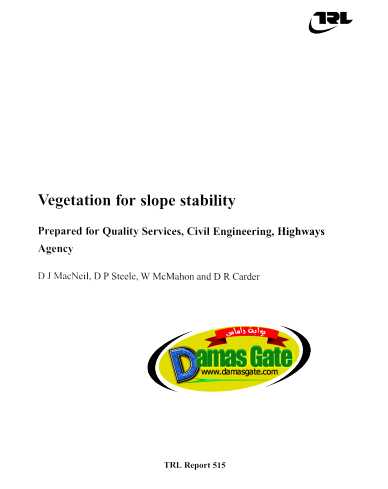Vegetation for Slope Stability

1 Introduction
Shallow slip failures on embankments and cuttings are iiiore likely in certain geologies, particularly over-
consolidated clays, as identified during the survey of slope condition on motorway earthworks and reported by Perry
( 1989). The reinstatement of these shallow failures can be costly and the potential for slips may be reduced not only
by the use of vegetation planted to provide reinforcement, through the plant root system, but also by a reduction in moisture content and pore water pressure. However, there
is a potential conflict between the engineering reqiiircments of earthwork materials to maintain stability and the moisture requirements to promote and sustain plant growth. For this reason careful selection of plant species is necessary and more information on planting regimes will
reduce any requirement for replacement planting. The use of vegetation and bioengineered approaches also has the advantage of offering improved ecological and aesthetic
benefits, in addition to the improvements in slope stability. In 1995, the Highways Agency (HA) commissioned
TRL to undertake a research project into slope stability and the cstablishment of vegetation. The aim of the project was to review the potential for vegetation as a preventative measure in high risk areas as well as investigating associated aspects such as vegetation reinforced steepened slopes in road widening and the use of live willow poles in
reducing the risk of shallow failures. Bioengineering techniques of this type may reduce the need for the costly maintenance of shallow slip failures on highway
embanlments and cuttings using traditional methods such as those reported by Johnson (1985).
Download
http://s18.alxa.net/s18/srvs2/02/001....Stability.rar